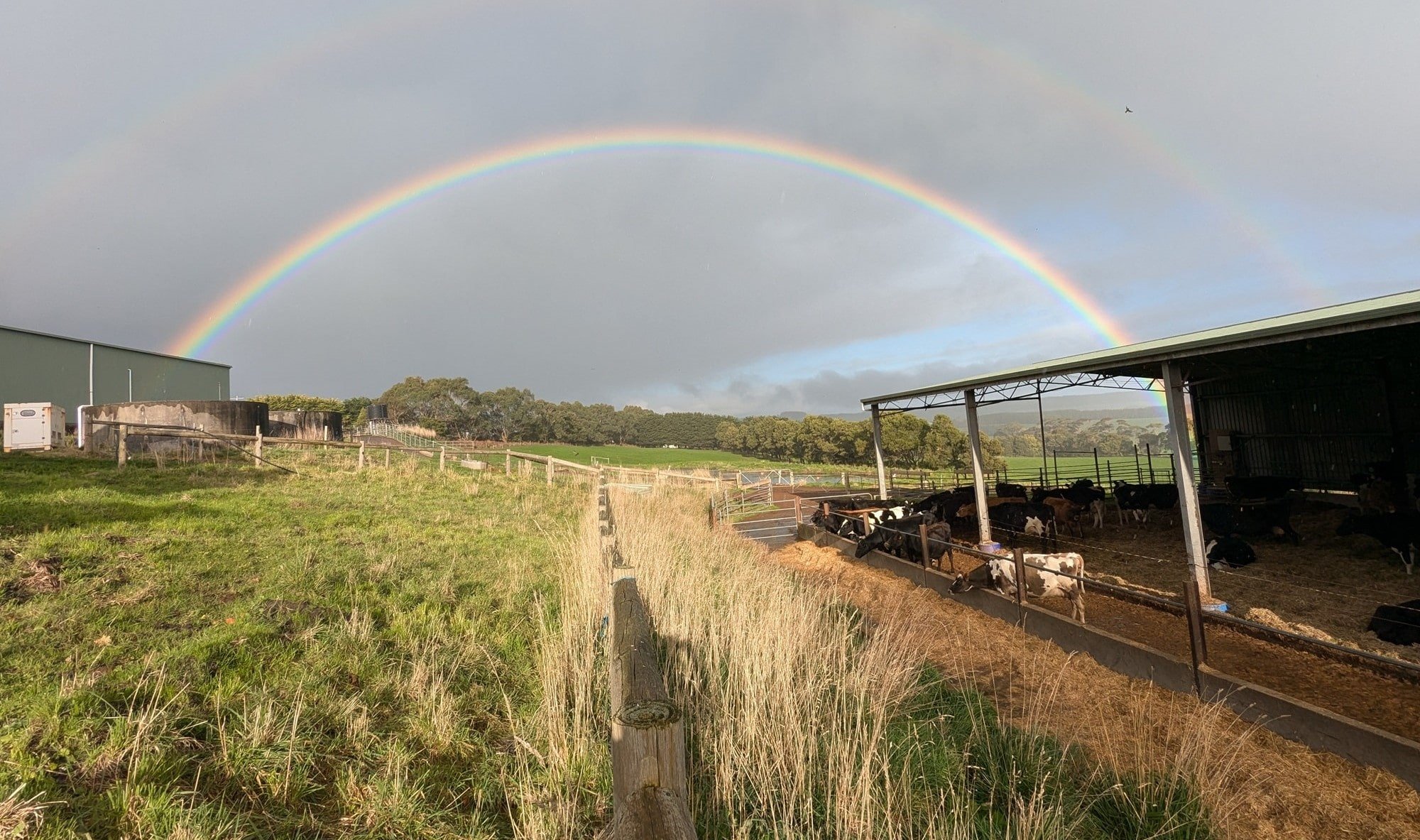
Regenerative farming
Land is one of those things that they don’t make any more of and needs to be looked after: not only for food production but it also goes hand in hand with the environment.
Dianne and Julian purchased their farm on the Heytesbury Settlement in 1981 and have developed it over the years since.
This pre-loved farm of 180 acres needed a lot of work done to it to get it to a very productive state. The farm had about 6 acres of badly eroded creek frontage that needed to be fenced off and trees put in to control the erosion. Fertility was very low with phosphorus levels at a very low 3-5 Olsen P.
Very large paddocks of about 20 acres (7 in number). Five dams for stock use and no troughs. No trees for shelter but at least they didn’t have those Cypress "mongrels".
Fertility was one of the first things we put our limited resources into by increasing productivity gives us the means to keep developing. We started with 105 cows. We received a grant to fence off the creek and put native trees in which was done in the first year (gums, blackwoods, tee trees and wattles) which enabled us to turn a liability into an asset.
The creek had washed out the crossing that had access to 17 acres at the back of the property – so we had to get that fixed. As fertility picked up we gradually raised the number of cows we milked through our six-aside Herringbone Dairy.
We then started splitting the paddocks up into smaller, 5 acre (2 hectares) and created 29 paddocks. We planted natives on the northwest boundary: these were tube stock and then every second fence line we used seed stock for those plantations. We also fenced off the other waterways and put in tube stock.
These smaller paddocks - half used as day paddocks and half as night paddocks - helped to spread manure evenly across the farm.
By now we had put in 1,000 gallon troughs down the middle of each side of serving two paddocks on fence line that didn’t have trees on them (saving on money).
We expanded our dairy into a 14 aside Herringbone Dairy as numbers increased.
In 1988 we purchased another 100 acres over the road and subdivided it as we had done on the home side into five acre paddocks and put in a new track to service it. We once again fenced off water ways and planted them with trees.
Our cattle numbers were increasing with each of these moves.
In 1992 the 90 acres that was attached to the 100 acres came up for sale and we purchased that. The home side dam that fed the cows had been expanded and down the middle of each side we laid 2 inch pipe and put 1000 gallon troughs in the middle of each paddock. They were fed by a 10,000 gallon tank at the dairy which was fed by an electric pump from the feeder dam. The fall from the dairy to the bottom troughs was 150 feet so the pressure was very high and we had to put in place high pressure poly piping that wouldn’t split. The troughs wouldn’t run dry on the hottest of days!
In 1994 we put a tunnel in to connect both the properties placing the dairy in the middle of the farm. We were now milking 300 cows and the 14 unit herringbone was becoming too much, so in 1996 we put in a 50 unit rotary dairy and increased numbers to 350 milkers.
Even though the herd had grown to 350 cows, we still milked off 52 five acre paddocks: 26 day and 26 night paddocks. Cows would not return to that paddock for 26 days in a normal rotation, allowing for urea to be added when needed and good feed available when they went back into those paddocks. Because they had plenty of feed in the paddock they wouldn’t overly damage the paddocks looking for a good feed.
We have a mixture of soils, mainly heavy clay, and a lot of these paddocks have been mole drained to lower the water table which, in conjunction with our rotations, reduces pugging damage to the paddocks.
Effluent from the dairy is managed in two ways: the liquid part (aerobic) is pumped down the paddock via a 2 inch pipe from a pump on that dam and has pop-ups on the side of the tracks that have no trees on them and can cover two paddocks either side of the track via a "Manurigator".
The solids (anaerobic) are spread out on the paddocks by contractors. This manure not only has phosphorous, potassium and nitrogen but also microorganisms and bacteria, which make for a very healthy soil. And saves a lot on fertiliser and pollution in water ways.
The trees we have planted offers protection from the cold and shade over hot summers for protection of stock but has encouraged lot of wildlife in the form of many different birds, koalas, ringtail possums and micro bats that clean up a lot of insects.


